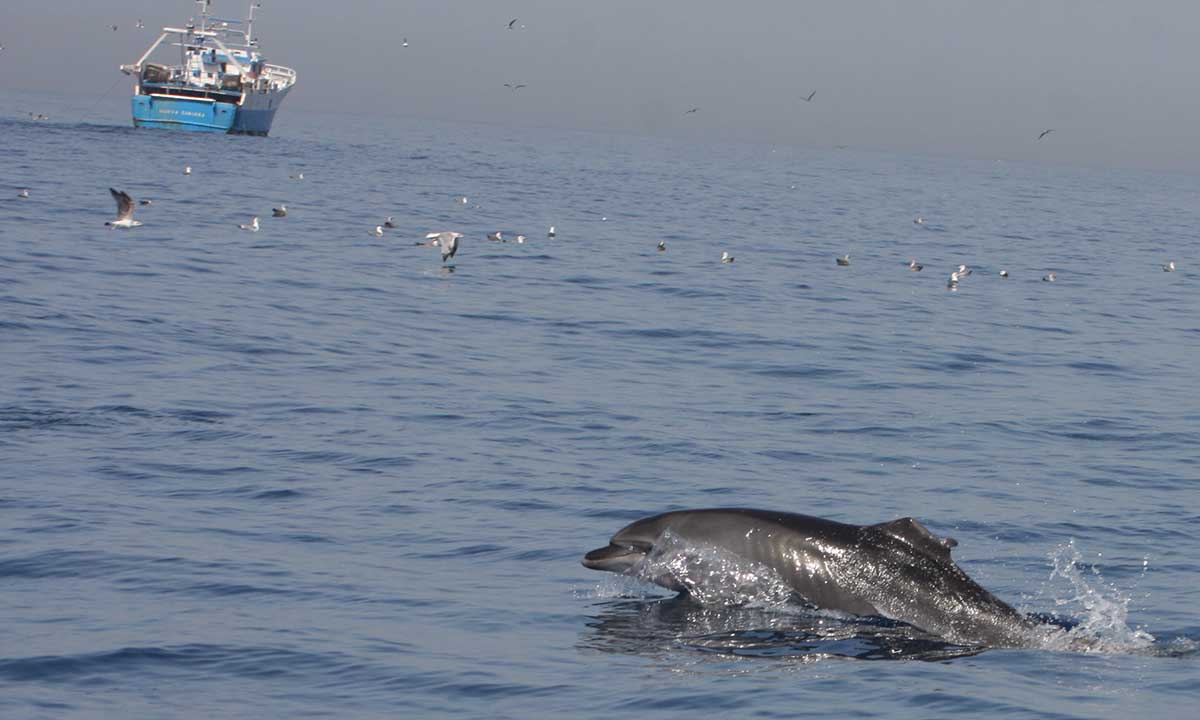Interactions with Fisheries
Fishing can affect cetaceans both directly and indirectly. Effects on animals include:
- bycatch;
- injury or killing by fishermen who perceive the animals as competitors;
- decrease/depletion of prey or changes in prey distribution caused by overfishing;
- habitat loss or degradation (e.g., due to trawling);
- short- and long-term changes in cetacean behavior that lead to emigration, dispersal, or reduced reproductive rates as a result of direct or indirect interactions with fisheries.
There is a long history of interactions between cetaceans and fisheries in the Mediterranean Sea. Cetaceans have always been attracted to fishing gear; they try to remove bait and fish caught by fishing gear. Cetaceans also feed in mariculture enclosures (fish farms). With some exceptions, current interactions mainly involve coastal, small-scale artisanal fishing. The gears that have the greatest interaction with cetaceans are trammel and set gillnets, trawls, drift nets, longlines, and purse seines.
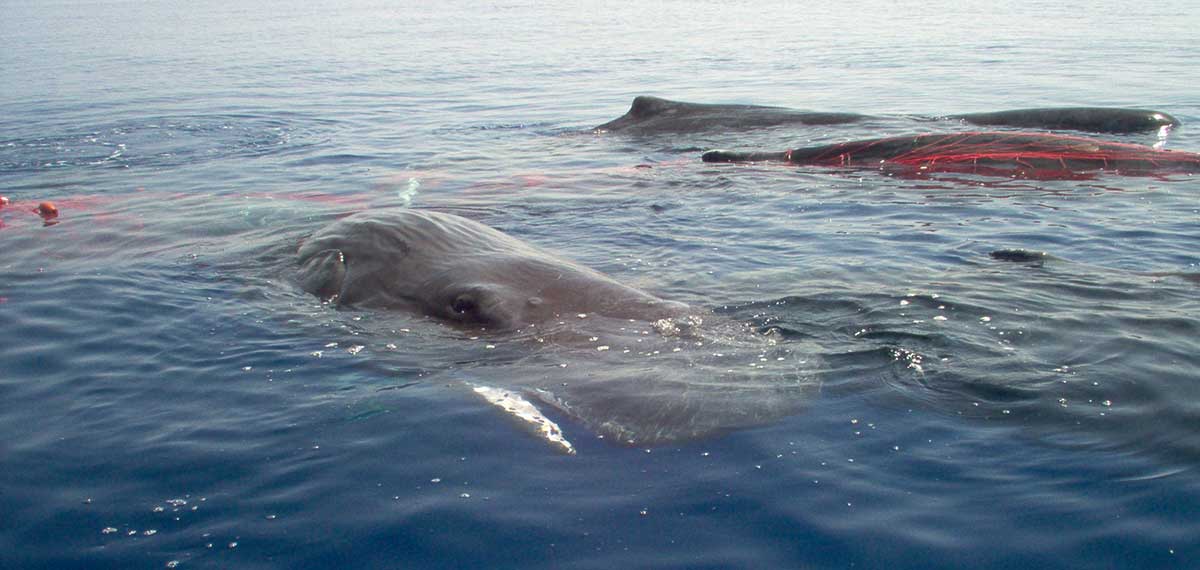
Interactions between cetaceans and fisheries can negatively affect fisheries through:
- abrasions and injuries to fish are caused during catch attempts or while "playing" with fish during fishing operations, even when they are sated. Cetaceans may take portions, or the entire fish, making them unmarketable.
- reduced catch disrupts fishing operations. Cetaceans can cause schools of fish to scatter and escape from the net.
- damage to gear (gear may not fish as efficiently, and loss of catch may result). Additional costs include time to repair fishing gear and expenses for new equipment.
- real or perceived ecological competition with cetaceans, based on the belief that depredation - particularly by dolphins - reduces the amount of fish available for fishing.
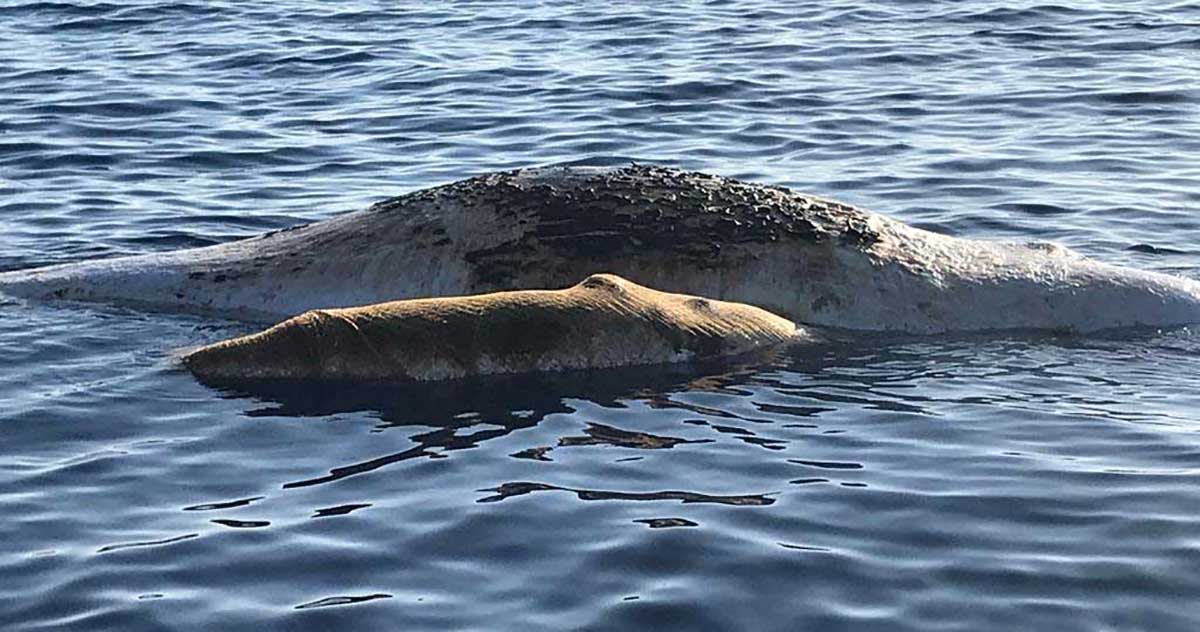
Information on the economic effects of dolphin interactions with Mediterranean fisheries is qualitative and inadequately documented. Detailed quantitative data on the spatial, seasonal, and operational characteristics of small-scale coastal fisheries is lacking throughout the region.
Identification of where overlaps occur (e.g., high dolphin densities combined with high levels of fishing activity) should be followed by rigorous site-specific studies to characterize and quantify the costs of dolphin depredation.
It is widely believed that dolphins in the Mediterranean compete with fishermen by reducing the catch of the fishery, but no solid scientific investigation supports this hypothesis.
On the other hand, it has been shown how the effects of competition are more unfavorable for dolphins than for humans, since the total biomass removed by fishing greatly exceeds that removed by dolphins.
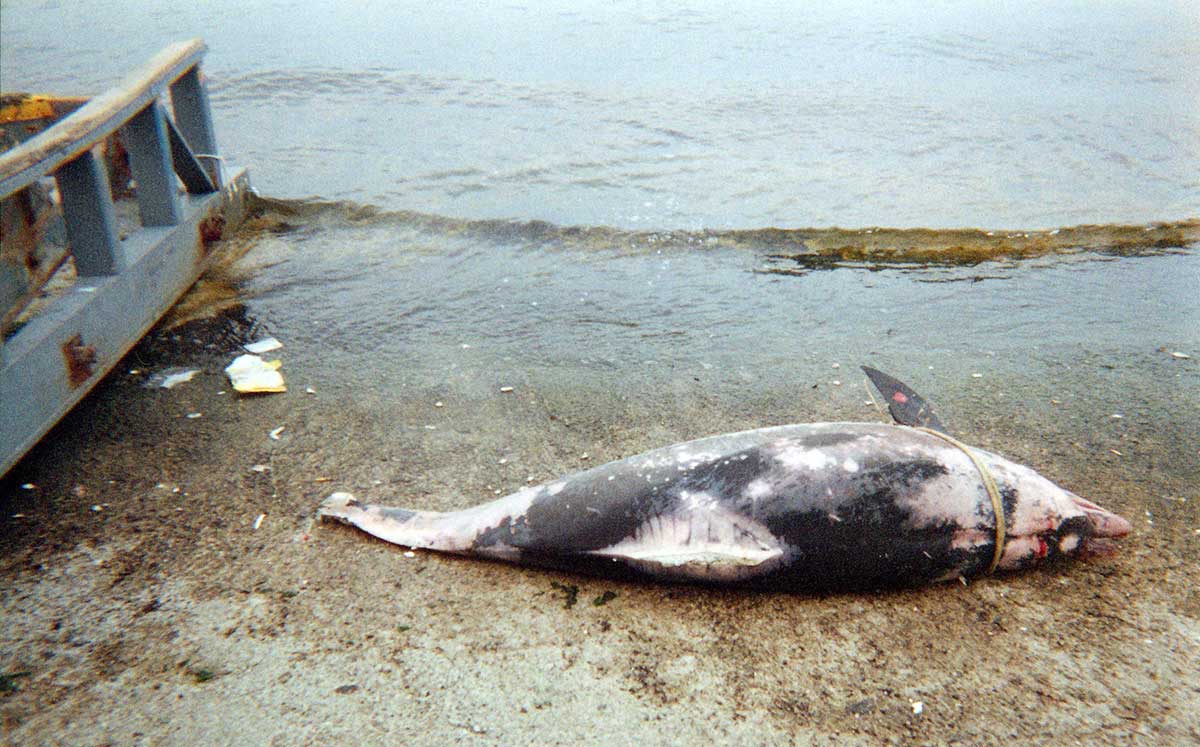
Interactions in the study area
In the study area, cetacean-fishery interactions involved different gear.
Specimens of Risso's dolphin and sperm whale were found entangled in longlines (coffa, conzo, palangaro). The Risso's dolphin specimen found in the sea was alive, swimming with difficulty without ever diving, and escorted by the other members of the group; the line and hooks were entangled to the dorsal fin and wrapped around the body up to the caudal fin. The sperm whale, on the other hand, was probably become entangled in an abandoned longline; the animal was in a very advanced state of decomposition, so its body could not be recovered.
Various specimens of striped dolphin and sperm whale were victims of interaction with drift nets for swordfish fishing, both in the now illegal version of the gear called spadara and in the version in use today called ferrettara. The animals were found drifting offshore, fully enveloped by the nets; in some cases, the animals were stranded, showing evident signs (tail and fin mutilation, scars) of interaction with the drift nets.
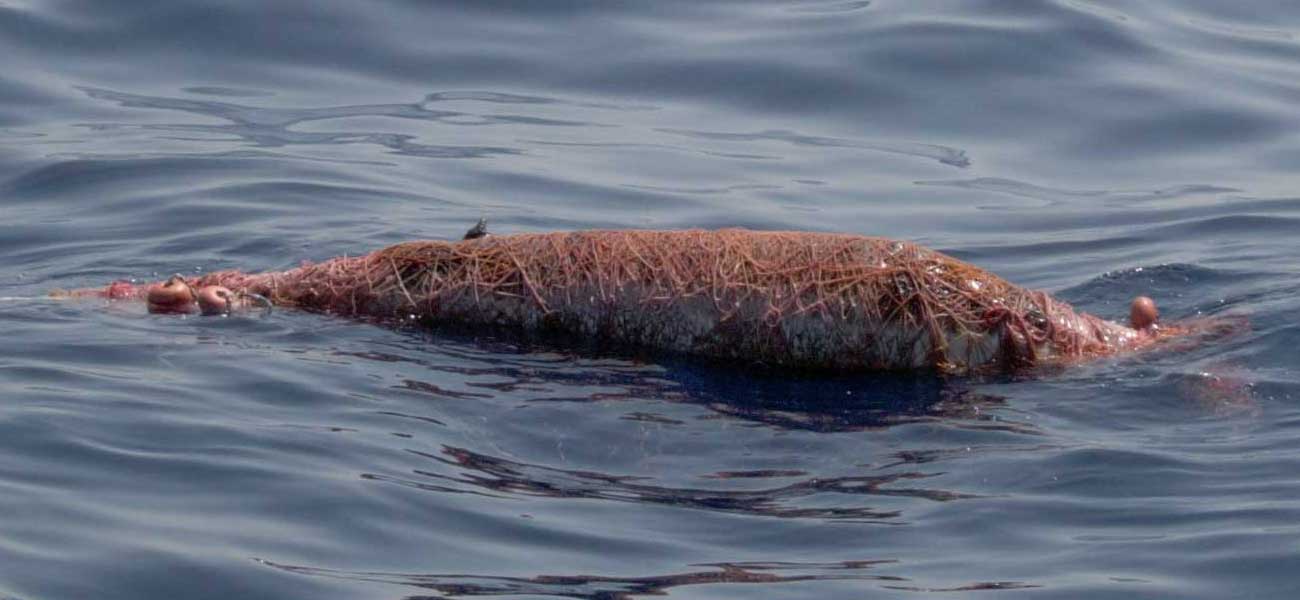
Another gear that has been the subject of interactions with cetaceans is the trawl net, also called "paranza."
Interactions have involved the bottlenose, striped dolphin, and fin whale species.
The cetaceans keep to the stern wake of the trawler with the net at sea by making long deep dives, probably taking advantage of the movement created by the net on the seabed or the waste escaping from it.
The fishermen interviewed say that for the bottlenose dolphin species, predation also takes place inside the net, especially when the cod-end is retrieved slowly; during this time, the opening of the net is larger and allows dolphins to prey on it in turn.
